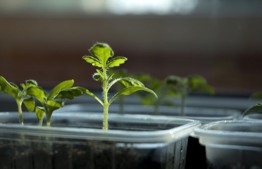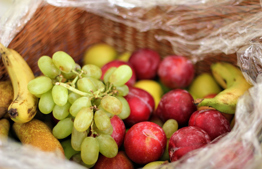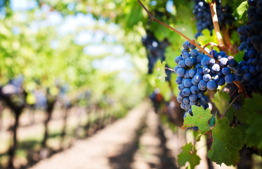The Laws of Ma’aser Rishon and Ma’aser Ani

5781 is the ma'aser ani year in the shemita cycle. What do we separate ma'aser ani from? How do we separate it? Who has "poor person" status and can receive the ma'aser? The following article explains all the details of ma'aser ani.
The year 5781 (2020-2021) is the sixth year of the seven-year shemitah cycle, making it a ma’aser ani year, the year of the poor man’s tithe. This year, besides our regular yearly obligations of setting aside terumah, ma’aser rishon, and terumat ma’aser, we also set aside ma’aser ani instead of ma’aser sheni, as we will discuss below.
The point in time when the ma’aser year begins differs for three types of produce: (1) vegetables, (2) fruit, and (3) grains and legumes.
1. Vegetables
The ma’aser ani year for vegetables begins at the time of harvest (lekitah), and the calendar cut-off date is 1 Tishrei (Rosh Hashanah). Therefore, vegetables harvested before 1 Tishrei belong, as it were, to the previous ma’aser year, while vegetables harvested after this date belong to the following year.
2. Fruit
The ma’aser ani year for fruit begins at the time the fruit blossoms after the flowers fall off (chanatah). The calendar cut-off date that determines this point is the 15 Shevat (Tu BiShevat). Therefore, a fruit that has begun to blossom before Tu BiShevat will belong to the previous year, while a fruit that begins to blossom after Tu BiShevat will belong to the following year.
3. Grains and legumes
The ma’aser ani year for grains and legumes starts when the produce begins to ripen, a stage which is known as onat hama’aserot (ma’aser season). The cut-off date for the onset of the ma’aser year for this produce is 1 Tishrei. Therefore, grain that begins to ripen before 1 Tishrei, will belong to the previous year, while grain that begins to ripen after 1 Tishrei, will belong to the following year. The laws for legumes are the same as those for grains.
A. There are two stages in the mitzvot of taking terumah and ma’aser:
- The act of setting aside the produce, including the verbal declaration (verbally identifying the part that is being set aside).
- Giving the ma’aserot to the appropriate party.
By performing the stages of “setting aside” and “declaration,” one successfully rids the produce of its forbidden tevel status, and the grain, fruit, and/or vegetables (which we will refer to below as: "the produce") are permitted for consumption. After this stage is completed, the second part of the mitzvah remains: giving the ma’aserot to the appropriate parties.
B. Terumah gedolah and terumat ma’aser are not given to a Kohen. Today, being that everyone (Kohanim included) is assumed to be halachically impure, the Kohanim cannot enjoy these gifts. Nowadays, the mitzvah of giving terumah to the Kohanim can be fulfilled with olive oil, since the Kohanim can use it to light candles. Under certain conditions, terumah can also be given to a Kohen’s pets or livestock.
C. Today, while ma’aser rishon must be given to a Levite, one need not find a Levi who has 100% verification of his pedigree. For the purpose of giving ma’aser rishon, anyone who claims to be Levi is assumed to be one.
D. If there is a doubt as to whether the produce is, indeed tevel, one should set aside terumah and ma’aser before eating it, just in case it is actually tevel. However, one need not give the ma’aser rishon to a Levi.
E. During years three and six of the seven-year shemitah cycle (5781 is year six), ma’aser ani is set aside from the produce and given to a poor person of choice. If one eats produce that has been earmarked and declared to be ma’aser ani that has not yet been delivered to a poor person, it is considered robbing the poor, since this is produce that belongs to them.
F. The laws of giving ma’aser ani are more stringent than those of giving ma’aser rishon, being that ma’aser ani is given even when there is a doubt whether it is mandated (safek ma’aser ani). That is, the basic assumption is that there is an obligation to give this gift. In halachic terminology, this is called a chezkat chiyuv; that is, there is a clear and definite obligation to give ma’aser ani, and there exists no doubt regarding it. Below are several scenarios that demonstrate the extent of this obligation, and we will explain how this affects one's obligation in each case. We will also relate to instances where one would be exempt from giving ma’aser ani:
- When shopping in a marketplace that lacks appropriate Kashrut supervision, one must set aside ma’aser ani without a blessing. This is because it is uncertain whether ma’aser has, in fact, been set aside.[1]
- If one shops in a marketplace that has set aside terumah and ma’aser, even if he knows that the supervisors do not give the ma’aser ani to the poor (that is, the exact whereabouts of the set-aside ma’aser ani is unknown–it is mixed in with the rest of the produce)–such a person is exempt from giving ma’aser ani. This is because there is a doubt as to whether or not it contains “ma’aser ani” However, if one purchases an entire lot of produce (in which the ma’aser ani is mixed in somewhere), and knows that ma’aser ani was declared and set aside, but not given to the poor–one must donate money to the poor. This amount of money should be equivalent to the value of the ma’aser ani, and the buyer may request his money back from the seller against this sum.
- When there exists a doubt as to which year of ma’aser the fruit belongs to, conditional ma’aser (ma’aser al tenay) should be taken.[2] This situation is common for loquats, peaches, and other fruit that begin to bloom in Shevat and Adar since it is unknown whether they bloomed before or after Tu BiShevat. Thus, it follows that it is unclear whether ma’aser sheni or ma’aser ani should be set aside. In such cases, there is no obligation to give ma’aser ani. However, if there is a mixture of fruit that definitely contains either loquats or peaches that blossomed after Tu BiShevat in the third year, one should set aside ma’aser ani for the entire mixture.
- For citrus fruits, one should take conditional ma’aser, as described above.[3]
- Produce that grew within the boundaries of olei Mitzryaim are exempt from ma’aser ani. However, ma’aser ani should be taken from grain, grapes, and oil (flour, wine, and olive oil).
G. The definition of a “poor person” today is determined according to his needs and the needs of his family for the duration of one year. A person who has the economic means to support himself and his family for an entire year is not considered to be ani, poor. Alternatively, if a person has a secure income that supports him, he is not considered “poor.” To determine the minimum income to qualify a person as such, one can apply the known rate for minimum wage[4] (including the havtachat hachnasah entitlement, which is determined based on the needs of the individual family). If a person lacks all of the above, he is, indeed, considered a poor person.
H. The mitzvah of giving ma’aser ani is fulfilled specifically by giving the produce itself to the poor; one cannot optimally fulfill the obligation by giving money in place of produce.
I. As mentioned above, the ma’aser ani produce must be given exclusively to a poor person. However, it is not always so simple to find a poor person each time one sets aside terumah and ma’aser. As such, the most convenient and preferable way to fulfill the mitzva of giving ma’aser ani is through mekirei aniyim: giving an advanced loan to a predetermined poor person. This loan should be approximately the value of the fruit that will be in one’s ownership during the upcoming ma’aser ani. This is precisely the arrangement at Beit HaOtzar, an initiative of Torah VeHa'aretz Institute. When done in this manner, the ma’aser ani produce is acquired by the poor person immediately when the produce is verbally declared to be ma’aser ani. In this arrangement, the poor person then gives the owner of the fruit permission to derive benefit from the produce in return for the monetary loan lent to him ahead of time. Members of Beit HaOtzar receive a magnet with the text for separating terumah and ma’aser. Magnets with an English translation are also available, upon request.
[1] Today (5781, 2020), someone who buys food from a supermarket chain is not required to give ma’aser ani, since for the most part terumot and ma’aserot are taken at the main warehouse.
[2] The condition is made, identifying 9/100 of the produce either as ma’aser sheni or as ma’aser ani, if this is mandated. Then one should proceed to redeem this portion on a coin without a blessing, in case the produce does require ma’aser sheni set aside.
[3] When it comes to citrus fruit, there is a halachic doubt whether we follow the time of harvest (like in the case of an etrog), meaning that all fruit harvested after Tu BiShevat 5781 will be obligated in ma’aser ani; OR we follow the time of chanatah, and only fruit that begins to bloom from Tu BiShevat 5781 and on are obligated in ma’aser ani. For this reason, it is uncertain whether citrus fruit that begins to bloom before Tu BiShevat but is harvested after this date is obligated in ma’aser sheni or ma’aser ani. In this case, one should separate ma’aser al tenay, as described above. Note that citrus fruit can be stored in warehouses for several months before they reach consumers.
[4] NIS 5,300 per month (as of Kislev 5781, November 2021)




